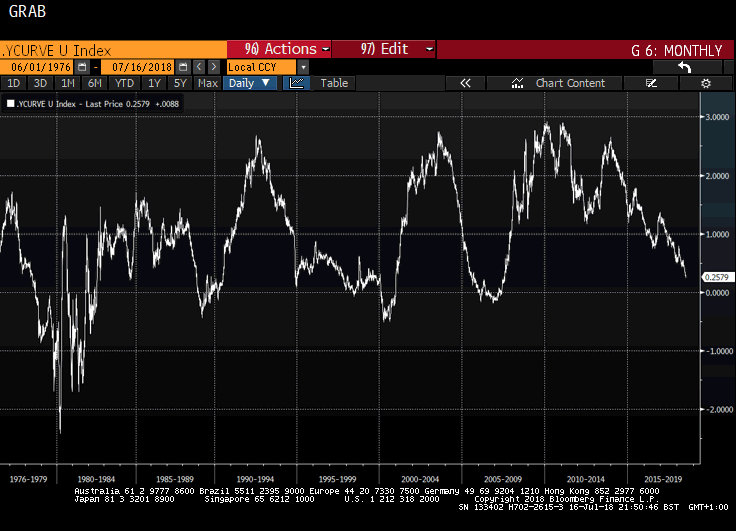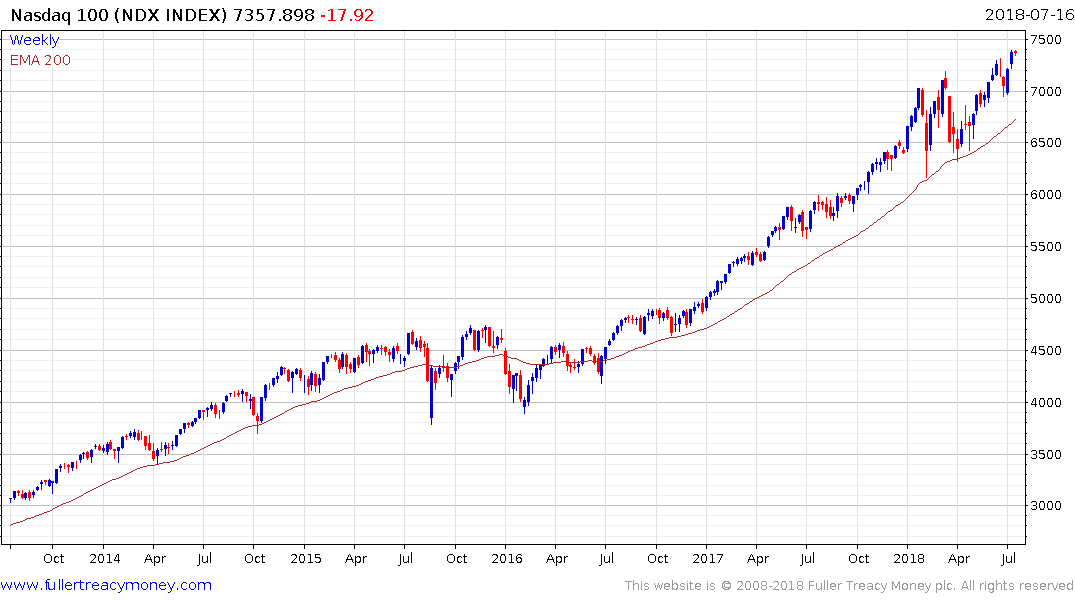Jeffrey Gundlach Says We're Getting Closer to a Recession
Thanks to a subscriber for this interview of Jeff Gundlach which appeared in Barron’s and may be of interest. Here is a section:
We are getting closer to a recession. When the curve goes flat from the two-year Treasury to the 10-year [meaning that the yields are identical], the recession risk is at least a year away. Recently, that spread was 28 basis points [hundredths of a percentage point], which is pretty close to being flat. It is flashing yellow. It needs to be respected. The other reason to think 2019 might be more problematic is that quantitative tightening has just started. The Fed has started to let bonds roll off its balance sheet [the central bank isn’t buying new bonds when many current holdings mature]. Several billion dollars of bonds per month are coming due, but by October the amount will be up to $50 billion per month.
At the same time, the Fed has said it intends to keep raising interest rates, probably twice more this year. That, together with the signal from the yield curve and perhaps $600 billion of quantitative tightening, and a budget deficit that is growing, is an issue. The strangest thing is that Congress passed a $280 billion tax cut and spending increases so late in the cycle, and with interest rates rising. It’s like a death wish. The U.S. is taking on hundreds of billions of dollars of debt while raising rates, which means our debt-service payments are going to be under serious pressure to the upside.
Here is a PDF of the full article.
The simple conclusion is often the most useful. The Federal Reserve, and other central banks, are taking away the proverbial punch bowl and that will eventually lead to a recession. Central bankers are generally a cautious group of people so they usually wait until they have ample evidence to support the view that their stimulative measures worked before raising rates. That often means they are late in tightening and have to play catch up.

The economic malaise resulting from the credit crisis was such that it took longer for evidence of expansion to appear than might otherwise be the case and this is still the most modest US expansion in the modern era.
There is an argument going on right now as to whether the yield curve spread will be as useful an indicator on this occasion because some people believe the bond markets have been so distorted by quantitative easing that it will no longer be reliable. That’s a big bet to take when there is so much evidence that the medium-term expansion is maturing.
Central banks don’t tighten policy unless the economy is in rude health and the tailwind from fiscal stimulus is still exerting a strong tailwind. That has been one of the primary reasons Wall Street has outperformed and has also been a factor in the Dollar’s strength.
.png)
The NYSE FANG+ Index remains in a consistent uptrend and a sustained move below the trend mean would be required to question medium-term demand dominance.

An important potential outcome to consider in my view is that if the Nasdaq-100 and Russell 2000 continue to hold their breakouts then there is a realistic possibility we see accelerations higher before the next recession starts. That is why now is the time to pay particular attention to the consistency of trends.


